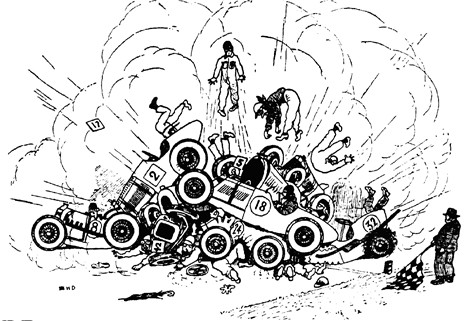Handicap car races were popular at Brooklands and other British circuits before and immediately after the Second World War . Early racing at Brooklands was based very closely on the organisation of horse racing with relatively short races where close finishes are aided by the use of a handicap . Unlike horse racing where horses are handicapped by carrying different weights in motor racing the handicap is by time penalties with the slowest car ( limit ) starting first and the quickest car starting last ( scratch ) the idea being that all cars arrive at the finish together .
Handicap races in contemporary motor racing have all but died out , although they are still held at Vintage Sports Car Club ( VSCC ) meetings and other smaller club meetings such as those organised by the Morgan and Bentley Sports Car Clubs .
Some long distance pre WW2 races especially those held at Brooklands used different types of handicap , the use of bends in lanes of varying severity to slow different classes of car more or less severely or where cars were handicapped ,once again on a class basis , where the smallest capacity cars were set off first through to the unlimited cars which set off quite some time later .
However the race that Salvadori won was likely to have been one of the numerous short handicaps of the type described in the first paragraph , which were a popular feature of Goodwood Members meetings throughout the circuits original life .
Edited by GazChed, 22 April 2018 - 15:57.






















